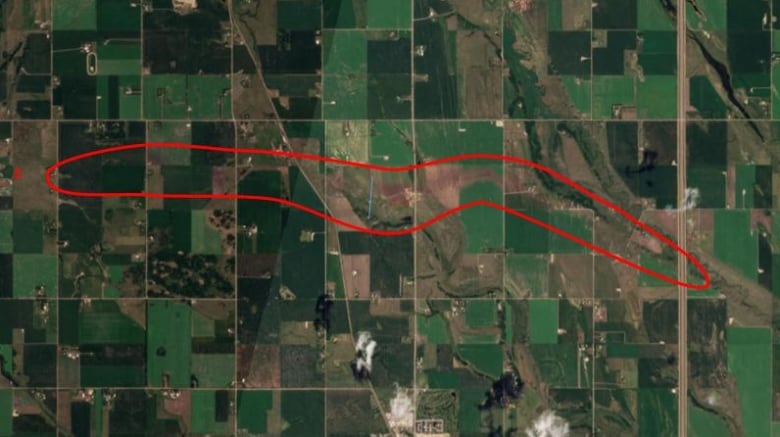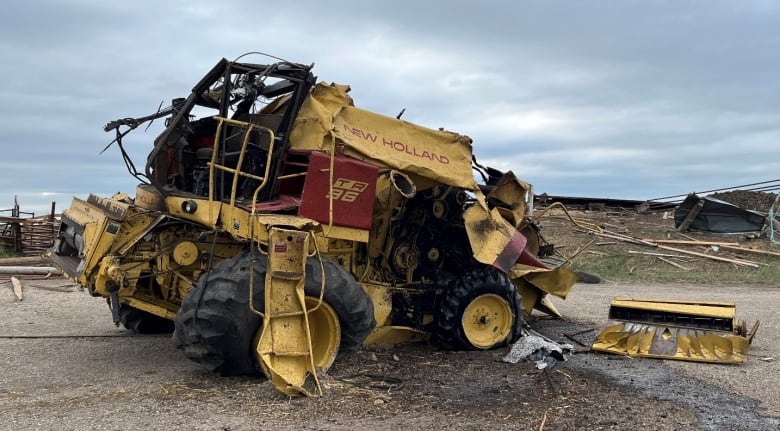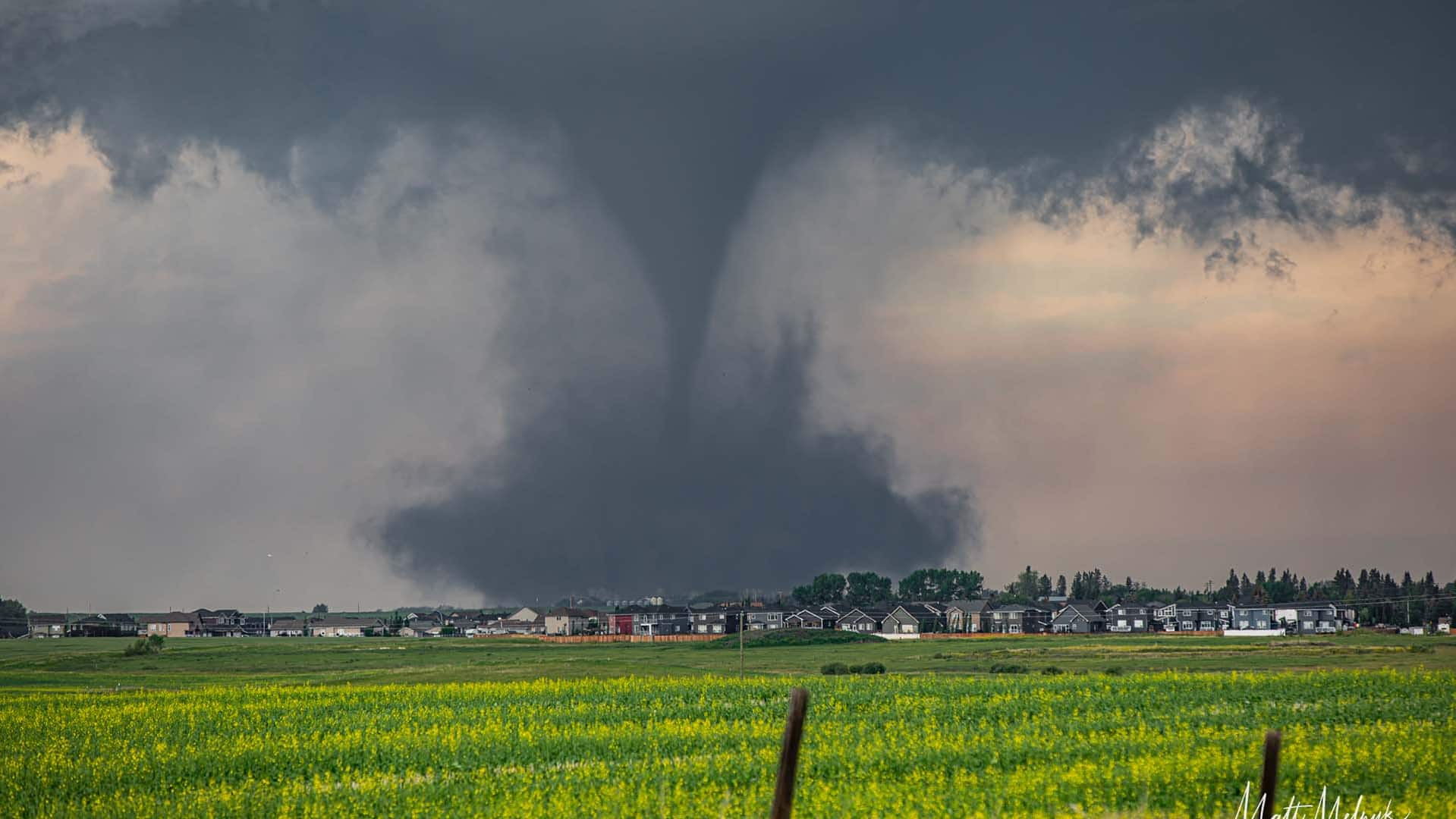
The tornado that destroyed several homes in central Alberta on the weekend was one of the strongest recorded in Canada’s history, with winds powerful enough to toss a farm combine weighing nearly 10,000 kilograms.
The Northern Tornadoes Project released Tuesday its preliminary damage analysis for the Mountain View County twister, rating the tornado as an EF-4, which is on the high end of the enhanced Fujita scale, which tops out at EF-5.
“Since we’ve started tracking tornadoes in the 1900s, only 21 have been rated this severe,” said Connell Miller, a survey lead with the team, which works alongside Environment and Climate Change Canada.
“If you think about it, Canada gets around 100-120 tornadoes per year. That’s an incredibly small number of tornadoes being rated this severe.”
Environment Canada said the funnel cloud was formed by a supercell thunderstorm and lasted roughly a half-hour. Top winds speeds were estimated around 275 km/h.
The scar left on the farmland, and across Highway 2A, was large enough to see via satellite.

Not since 1987, when an F-4 ripped through eastern Edmonton and killed 27 people, had such a powerful tornado descended on Alberta. The only other F-4 recorded in the province happened in the Grassy Lake area in 1915.
Environment Canada switched from the Fujita scale to the enhanced Fujita scale in 2013, hence the difference in the EF/F rating.
No fatalities
In the path of Saturday’s twister were several homes, 12 of which were damaged, the report said. Three of the homes were flat-out destroyed while four were left uninhabitable.
A woman was inside the home when the tornado struck, and she took shelter in the basement. Emergency crews had to clear the wreckage to reach her.
While her home was blown away, she was left unharmed.
“It’s a miracle nobody was more severely injured or killed in this event,” Miller said.
The surveying team attributed this result to the timely warning issued by Environment Canada. Additionally, the government agency said the tornado warning and its lead time “likely helped to ensure no fatalities occurred.”

Reading the wreckage
Through surveying the wreckage, the researchers determined how strong the tornado was by figuring out what wind speeds would be needed to, say, flatten the walls of a sturdy home or toss heavy farm machinery.
The single piece of damage from Saturday that stood out to Miller was the lifting of a nearly 10,000-kg combine.
“It’s still mind-boggling to me,” he said.
The tornado lifted the combine and tossed it about 50 metres before the machine rolled and came to rest as a “crumpled ball of metal.”
WATCH | Powerful tornado descends on central Alberta:
Researchers are working to determine the exact strength of the tornado that hit north of Calgary Saturday, destroying several buildings. For residents, the cleanup continues.
Over the past few days, dozens of volunteers have stepped up to help the farmers and homeowners impacted by the tornado.
Lance Douglas, one of the volunteer organizers, said he planned to spend Tuesday working to get large machinery in the area to remove downed trees.
The Northern Tornadoes Project plans to release a more complete report on its findings. The group is a Western University unit focused on understanding tornadoes in Canada.
The team says only one F-5 tornado has been recorded in Canadian history. It touched down about 30 kilometres west of Winnipeg, in the village of Elie, in 2007.
There were no fatalities or injuries but it did damage a flour mill and destroyed several houses.
